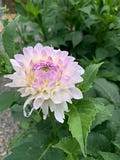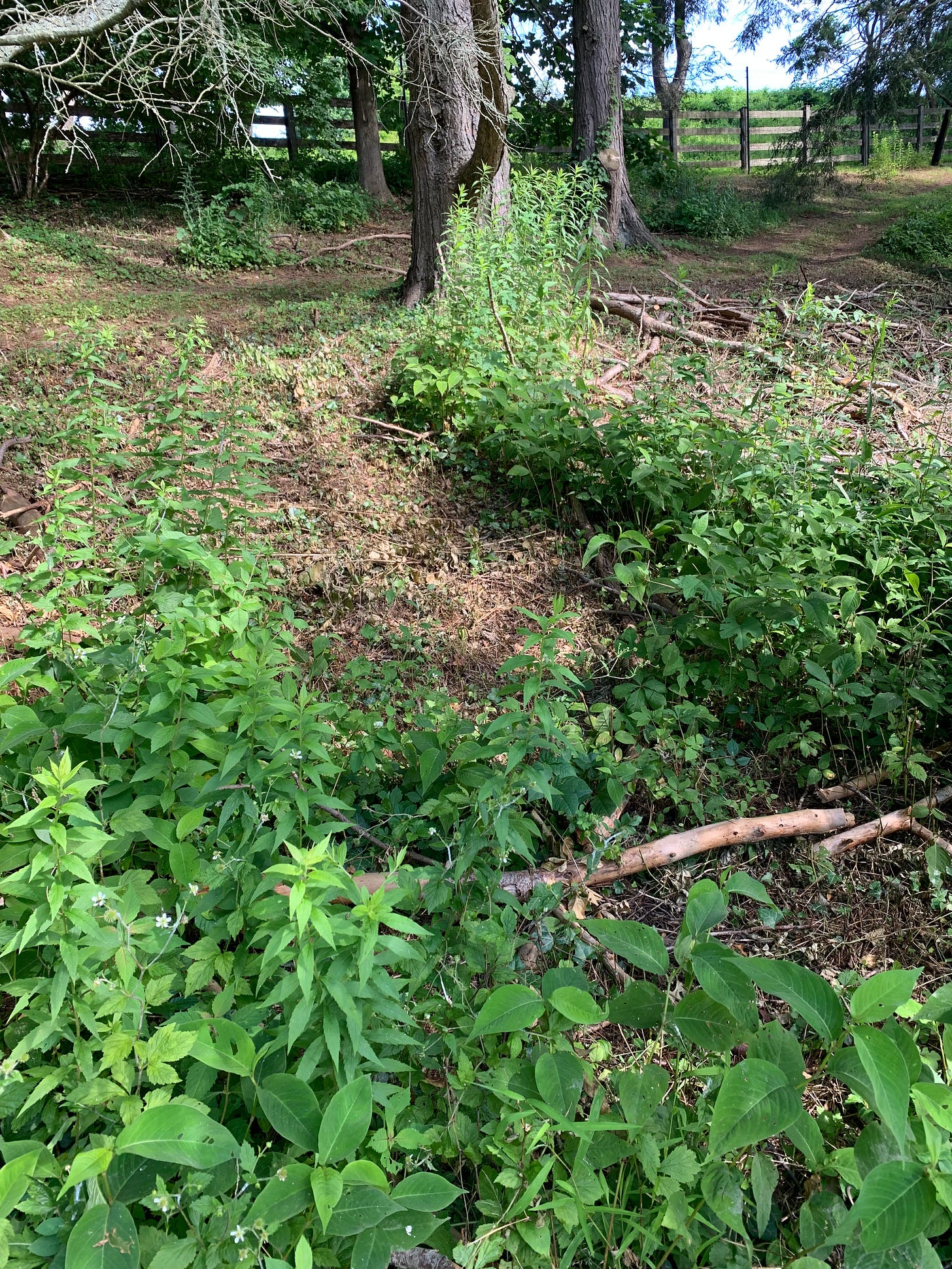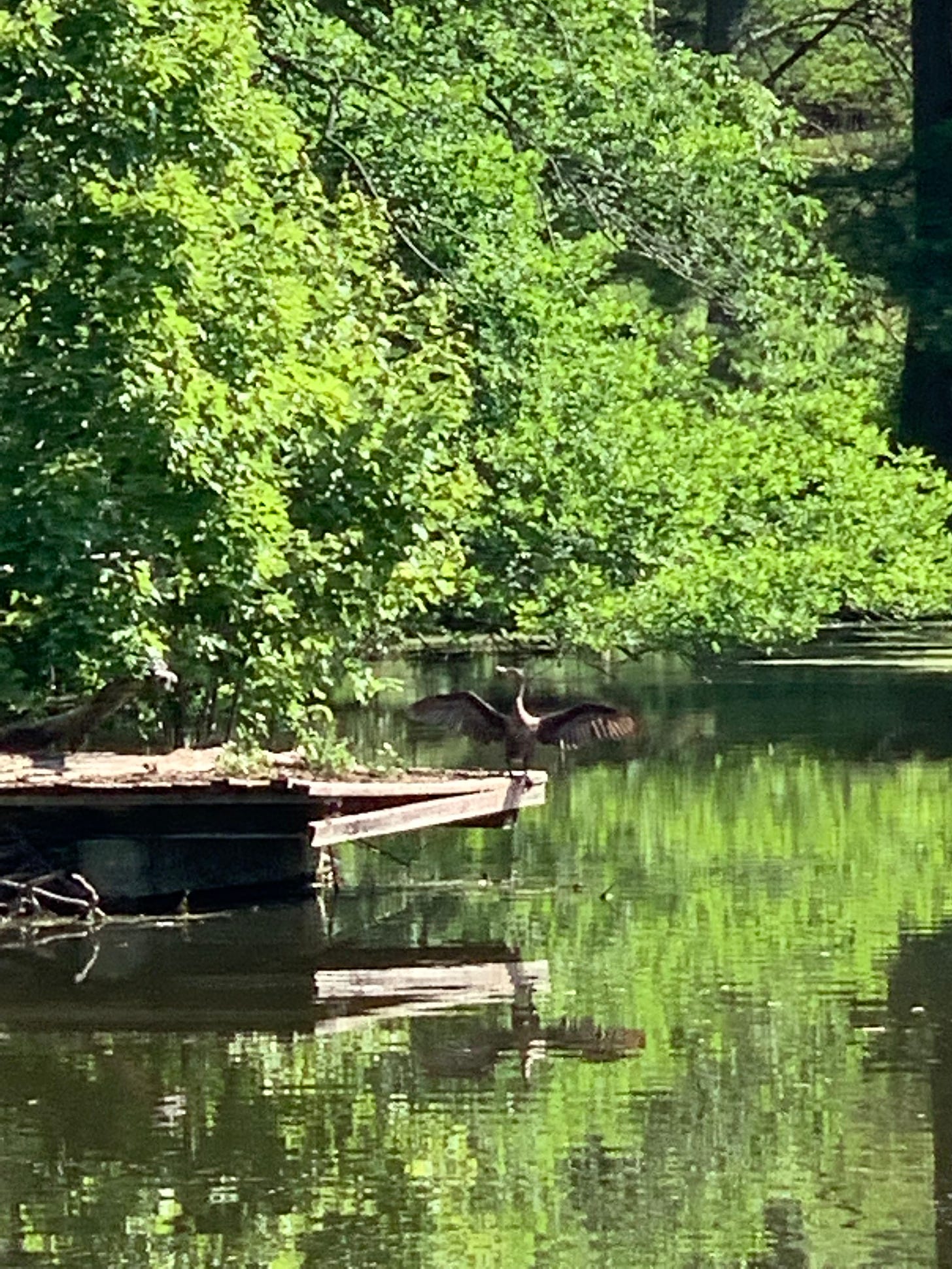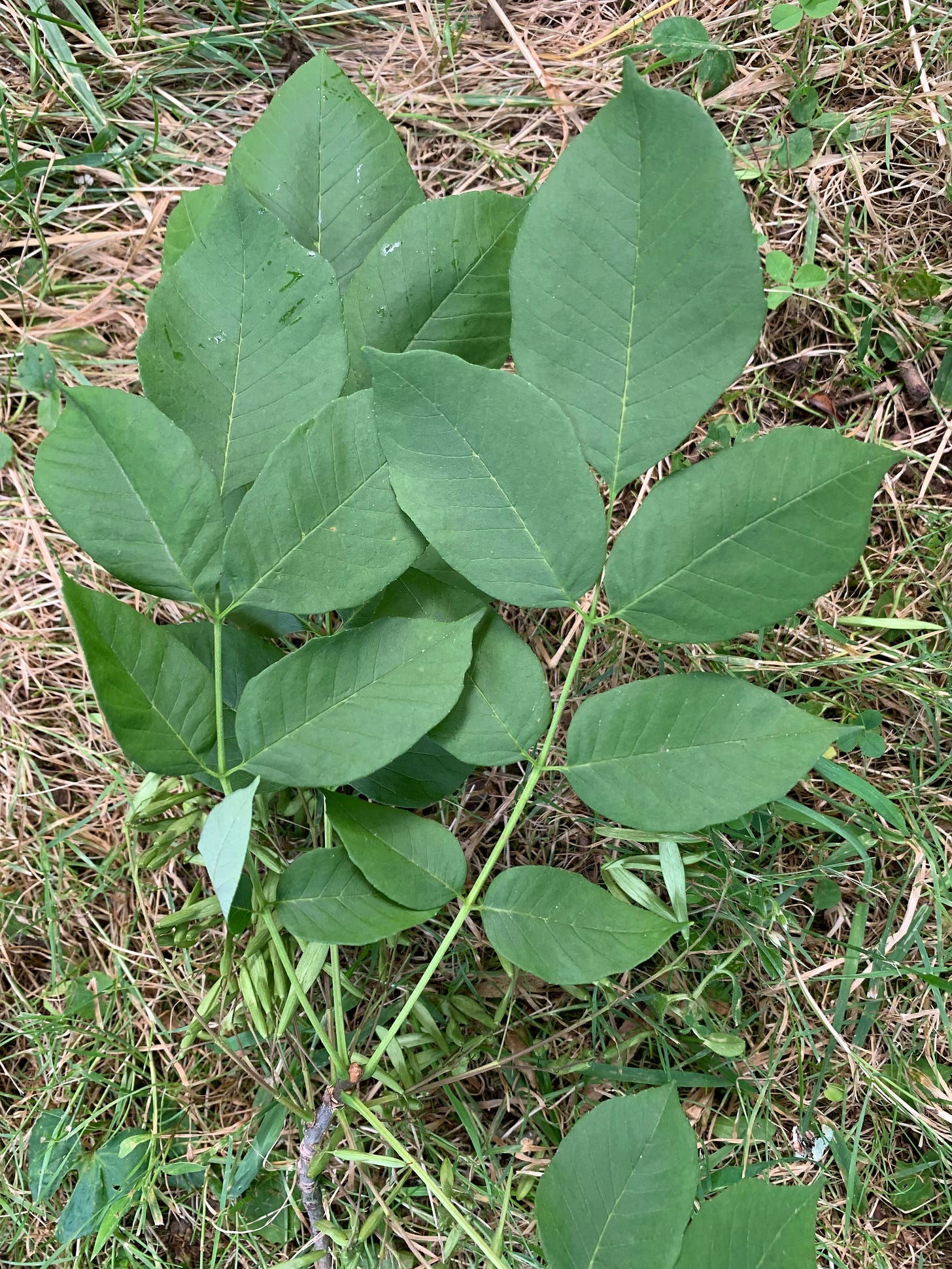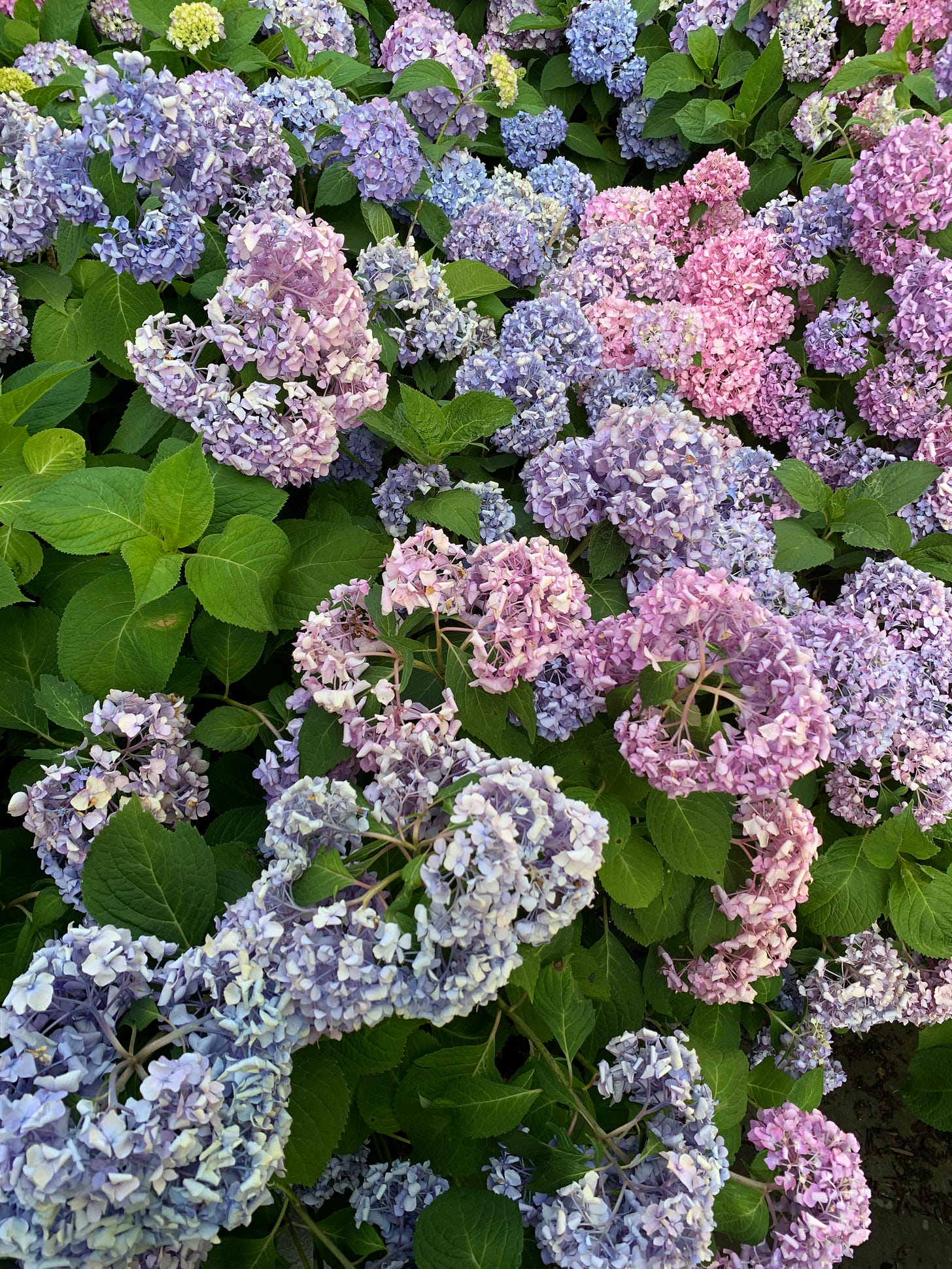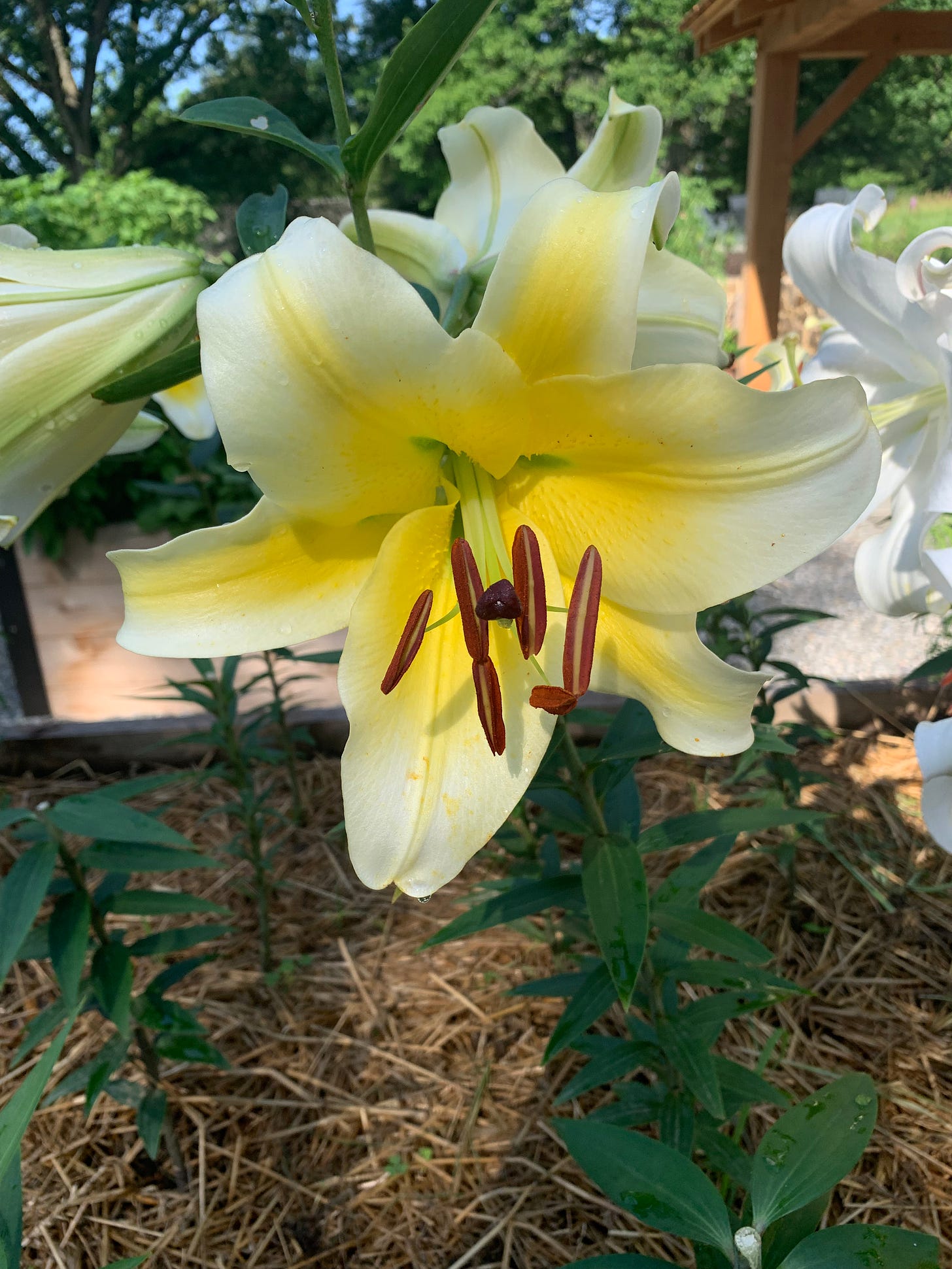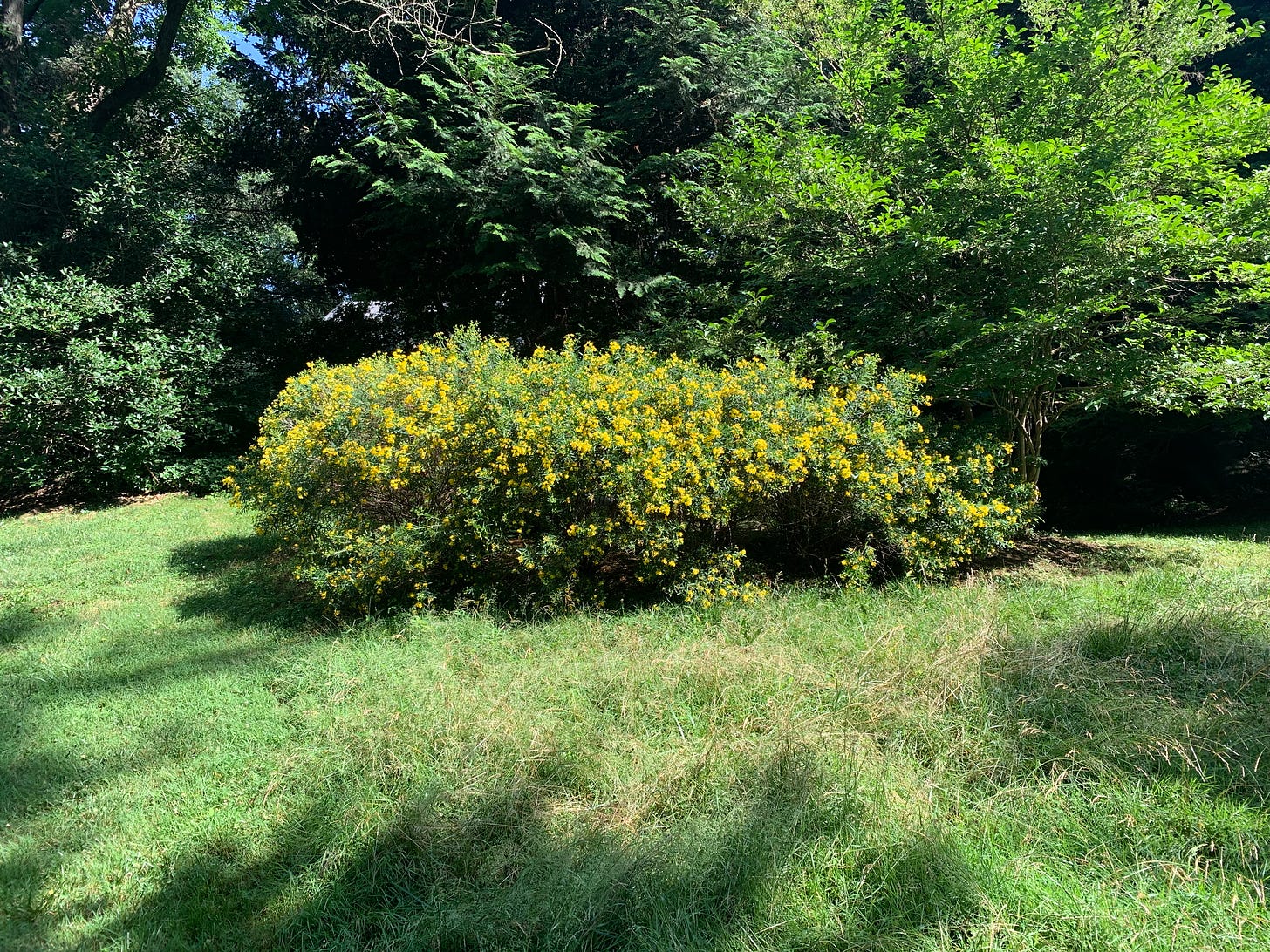Do I Throw in the Trowel?
Puddock Hill Journal #14: Multiple Invaders Challenge the Backyard Steward
Yesterday evening I went out with the string trimmer and found discouragement.
There are so many ways to look at nature. We can take in the lay of the land to understand its underlying geological formations, for example, or we can dig a small hole and appreciate the different layers of soil (called horizons). We can stand back and examine the growth habits of trees and shrubs or study the bark of their trunks in deep woods. We can ignore the most common greenery around us and home in on the unusual fish or fowl, the herbaceous plant, or the shy amphibian.
In my daily morning walks, I tend to look for nice little surprises, such as a blooming wildflower, but I also keep an eye out, pruner in hand, for the single invasive sprig growing in a sea of beneficial plants at the edge of the meadow or in the woods.
From my outdoor “office” on the porch off the library, by contrast, I see only the more prominent players: Spanish fir, Cutleaf maple, Atlas cedar (none of them native but all beautiful), the nearby new native planting bed of Oakleaf hydrangea, Witch alder, and Chokeberry that disrupts the lawn, and the sweep of the hill down to the big pond.
I’m currently working on an outline for the second half of my next novel, Once We Were Giants (which is also the Capstone project for my masters), and it was slow going yesterday, so I knocked off an hour early. I might have turned on Wimbledon, but I pulled on my jeans instead, popped the battery into the string trimmer, and sallied forth.
The seek-and-destroy perspective on nature is different from all others. I began by looking for mile-a-minute vine, as I’d destroyed it with great fervor in several places just a few days ago but on a later walk had noticed some that escaped my wrath.
This noxious weed lives up to its name if anything does. Whether I’d missed some or it came roaring back, I had to plow down any number of native plants (mostly ragweed and goldenrod, but also Virginia knotweed and who knows what else) in order to get to it. And every time I lifted my head from the task I saw more.
Other noxious invaders grew right beside it, in particular multiflora rose and porcelainberry, which is suddenly everywhere, seemingly three feet longer than it was just a week ago and now forming flower buds where most vigorous.
My part-time property manager, Larry, and his crew had just begun beating back the invaders on the big pond dam slope last week (while working around friendlies), but he didn’t have time to finish. Here’s what it looks like near the spillway:
Now I found porcelainberry in profusion in an area at the edge of the wet woods. It was so bad there that I couldn’t hope to conquer it on my own, and it probably will require mowing to get under control, but not all areas are accessible by mower. Argh!
It occurred to me, as I stood there discouraged, that the wet woods needs more trees. Of course, I’ve known this for a while, but I have not yet prioritized tree planting there, a sin for which I’m now being punished.
I had a Zoom meeting coming up, which provided a convenient excuse for ending this round, but in truth I felt deeply discouraged. Maybe, my dark thoughts allowed, this is what nature wants. Not natives, but invaders to change the very essence of the North American biome. That’s surely what it looks like with a string trimmer in hand on the west side of the wet woods!
Soon I found myself categorizing in my mind all of the incursions I’d witnessed this week: Japanese bittersweet, which we’ve successfully kept from the trees, now growing four feet long in the small meadow by the house; Asiatic smartweed (Persicaria longiseta) suddenly cropping up everywhere; a few spots where the Multiflora rose got missed, enabling it to grow so woody that it defeated the string trimmer and required ratchet pruners to remove it; a Japanese honeysuckle vine I found wrapping itself around the trunk of a sapling we planted just last fall. Also, now, here comes the fresh hell of Japanese stiltgrass (Microstegium vimineum) attempting to crowd out everything—and already succeeding in places.
This sequence of observations sent me to a dark place, friends, I have to admit. I began to wonder whether my outline for the novel sucks. I lingered over the chronic futility of my tennis game, which has been in the crapper all season. I recalled that my wife sometimes has to remind me that I expect too much of people. Also—forgot to mention—the Japanese beetles are out in force! What the hell is the point of any of it?
But back to the plant invasion. I started thinking we might need to change strategies, maybe cut the whole place to the ground, leaving only trees and shrubs. Maybe, I pondered, the time has come to throw in the trowel. [sic]
I called Larry and shared my disappointment about the state of things, which is no fault of his—we’re trying to hold back the ocean with a sieve. He talked me down from the limb, however. He has a grasp of what needs doing and seems to think we can make a big dent against invasives in the next few weeks. I began to hope he’s right. Hope…that thing with feathers.
The next morning, after a steady overnight rain, the sky brightened. I took my usual walk around the big pond with Apollo (the dog, not the god, but try telling him that). By the barn we startled a well-fed Eastern cottontail (Sylvilagus floridanus). It sped away, and the dog did not deign to give chase.
A moment later, I spotted my first monarch butterfly of the season between the barn and the wet woods, right near the milkweed we’ve encouraged, and not far from the dreaded porcelainberry invasion.
Down at the big pond, a Common blue damselfly (Enallagma cyathigerum) flew into view and came to rest on a willow leaf.
I recalled a pair of green herons that appear to have settled in for the summer; I see them nearly every week. Other water birds, too.
Just yesterday I chanced upon a Double-crested cormorant (Nannopterum auritum) drying its feathers on the island in the big pond, a sight I’d never seen before at Puddock Hill.
Also, a passel of American red squirrels (Tamiasciurus hudsonicus) has established itself in the woods by the driveway bridge.
American pokeweed (Phytolacca americana), of which we had a single specimen last summer, has begun to multiply. Its berries, poisonous to mammals, will provide sustenance to songbirds.
The morning I wrote this, I pulled out my Merlin app to identify the birds singing in the nearby trees. There were a few of the usual suspects: Gray catbird, Song sparrow, Red-winged blackbird, and American Robin. But also a bird I hadn’t heard here before, the Eastern phoebe (ayornis Phoebe). That was cool.
Maybe this backyard steward won’t throw in the trowel after all.
To begin Show and Tell on a sour note, here’s a Spotted lanternfly late nymph feeding on multiflora rose. Next step: wings. Based upon my observations, I fear it will be a bad year for these pests:
Under the trees by the springhouse, I discovered Common selfheal (Prunella vulgaris) in bloom, larval host to the Clouded sulphur butterfly (Colias philodice):
I didn’t realize we had a Green ash tree (Fraxinus pennsylvanica) down by the spring house until I found a fallen branch on the ground this week, laden with seeds:
It’s been a good year for hydrangeas. These are right off the front patio:
Pretty lily:
Our native St. John’s-wort hedge (Hypericum densiflorum, I think), now in bloom by the frog pond:
One of Pam’s prettiest dahlias yet shows off in the raised bed garden:
Namaste.
